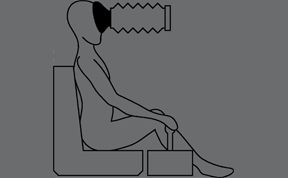video part 1
view at youtube or download video
video part 2
view at youtube or download video
When and how do humans modulate impedance to optimise task-oriented performance?
In the earliest studies of human arm impedance it was shown that the fundamental spring-like properties of the neuro-musculo-skeletal system generalise to multiple dimensions. Imposing small displacements of the hand with a robot in two dimensions generated restoring forces toward the initial position. Given the presence of multi-joint muscles and non-homonymous reflex loops in the spinal cord, the CNS can in principle modulate each of these three characteristics independently. A fundamental question therefore is, when and how do humans modulate the multi-dimensional parameters of the limbs impedance in order to optimise performance for different tasks?
In these lecture I will review the early literature on human behaviour that have inspired theories about impedance control for humans and for robots. I will discuss some of the experimental evidence that links theory to reality in biological systems and I will describe some more recent attempts to apply the principles of impedance control, and related theories, to understanding how humans control movement.

